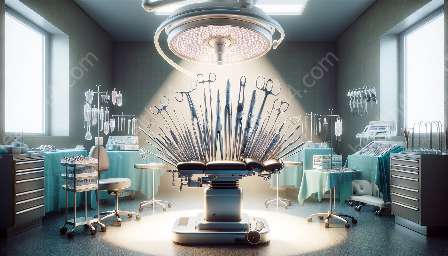In the field of surgery, precision, accuracy, and safety are of paramount importance. Surgical instruments and medical devices play a critical role in ensuring successful surgical outcomes, and one such instrument that is indispensable in surgical procedures is the retractor.
What Are Retractors?
A retractor is a surgical instrument designed to hold back the edges of an incision or to hold open organs and tissues to provide optimal visibility and access to the surgical site. These instruments come in various shapes and sizes, each designed for specific surgical procedures and anatomical areas.
Compatibility with Surgical Instruments
Retractors work in conjunction with other surgical instruments to facilitate the smooth progress of the surgical procedure. Whether it's a scalpel, forceps, or needle holder, retractors play a crucial role in ensuring that the surgical field remains clear and accessible.
Types of Retractors
There are several types of retractors, each serving a unique purpose in surgical operations:
- Hand-held Retractors: These retractors are manually held by surgical personnel to hold back tissue or organs.
- Self-retaining Retractors: These retractors are designed to stay in place once positioned, thereby freeing up the surgeon's hands for other tasks. They are a popular choice for longer procedures.
- Wire Retractors: These retractors consist of a malleable wire and are particularly useful in delicate procedures such as neurosurgery.
- Lateral Retractors: These retractors are used to hold back tissues or organs to the sides, providing increased visibility and access to the surgical site.
Benefits of Retractors
The use of retractors offers several benefits in surgical procedures:
- Optimal Visualization: Retractors aid in providing the surgeon with a clear view of the surgical site, enabling precise and accurate maneuvering of instruments.
- Tissue Protection: By holding back tissues and organs, retractors help prevent unintended damage to surrounding structures during the operation.
- Enhanced Efficiency: Retractors contribute to the smooth flow of the surgical procedure, allowing the surgical team to work with greater ease and efficiency.
- Reduced Risk of Complications: The proper use of retractors can help minimize the risk of complications by maintaining a controlled and unobstructed surgical field.
Retractors and Medical Devices & Equipment
Retractors are an integral part of the broader landscape of medical devices and equipment used in surgical settings. They complement the array of instruments and devices, contributing to the overall success of surgical interventions.
With continuous advancements in medical technology, retractors have evolved to meet the demands of modern surgical practices. Some retractors are now equipped with features such as lights and magnification, further enhancing their utility in complex procedures.
Conclusion
The importance of retractors in surgical procedures cannot be overstated. As an essential component of the surgical toolkit, retractors play a vital role in ensuring optimal visibility, access, and precision during operations. Their compatibility with surgical instruments and synergy with medical devices and equipment emphasize their significance in the realm of healthcare. As surgical practices continue to evolve, retractors will undoubtedly remain indispensable assets in the pursuit of successful surgical outcomes.


